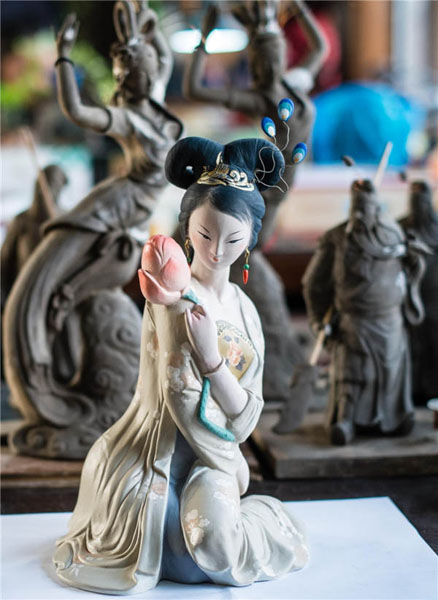 |
|
A clay sculpture created by Xia Zheng depicts a maidservant of ancient China. [Photo/Xinhua]
|
In one go
Of course whenever a particular art form enters the market place, changes to the form are inevitable, but not all those changes are necessarily negative. The types of Huishan clay figurines seen today are the most popular images that have been chosen by over 1,000 years of development and market forces. Out of all of these, A Fu is the one that sells the best.
"The images of cats and cattle (that used to be popular) are gone now, A Fu is the only one left," said 75-year-old Yu Xianglian, one of the most experienced veteran clay figurine artists in the region.
Besides A Fu, traditional opera figures are also very popular. Presented as an individual or in a group, these opera characters exemplify the essence and competitiveness of Huishan clay figurines, which are often compared to Tianjin clay figurines, another historically famous type of intangible cultural heritage.
Whereas Tianjin clay figurines can add or remove pieces of clay as needed, Huishan clay figurines are more about molding a certain amount of clay into shape.
"Clay must be molded in one go. Hence for those who make these figurines, they must have a very clear image of the product they want to make before they start," Yu explained.
These different handcraft techniques cause the two types of figurines to have different characteristics. While Tianjin clay figurines look more realistic in appearance, their Huishan counterparts are more about conveying an abstract spirit or feeling, which is further underscored by another distinctive characteristic: the use of color.
We Recommend:
